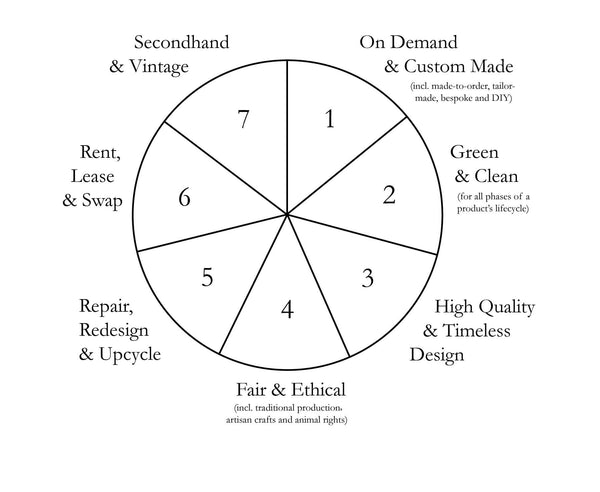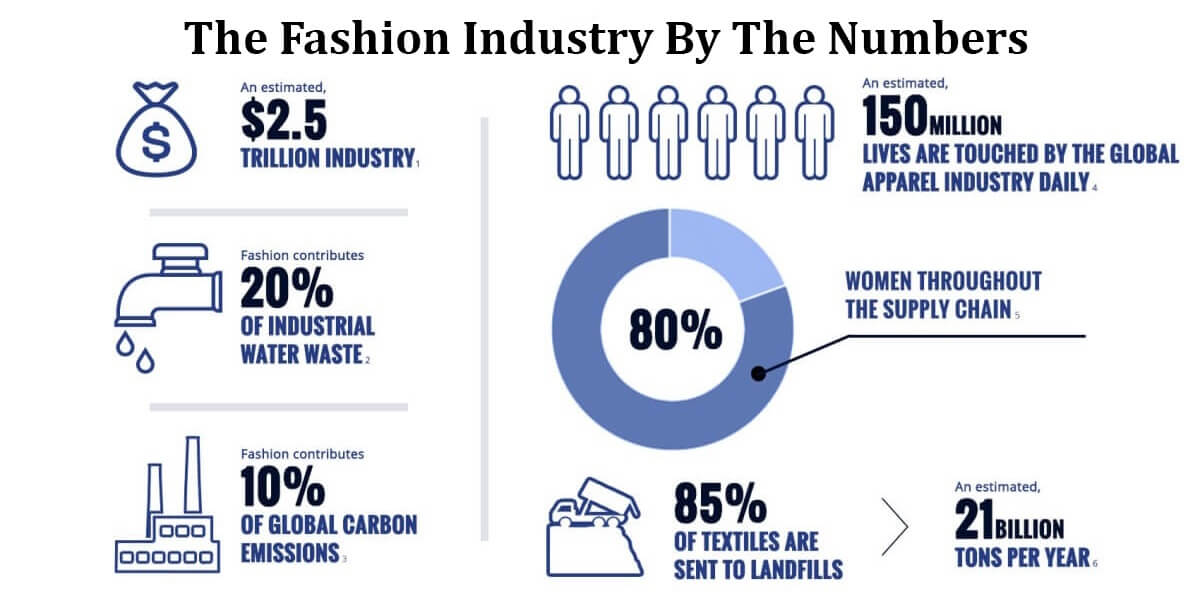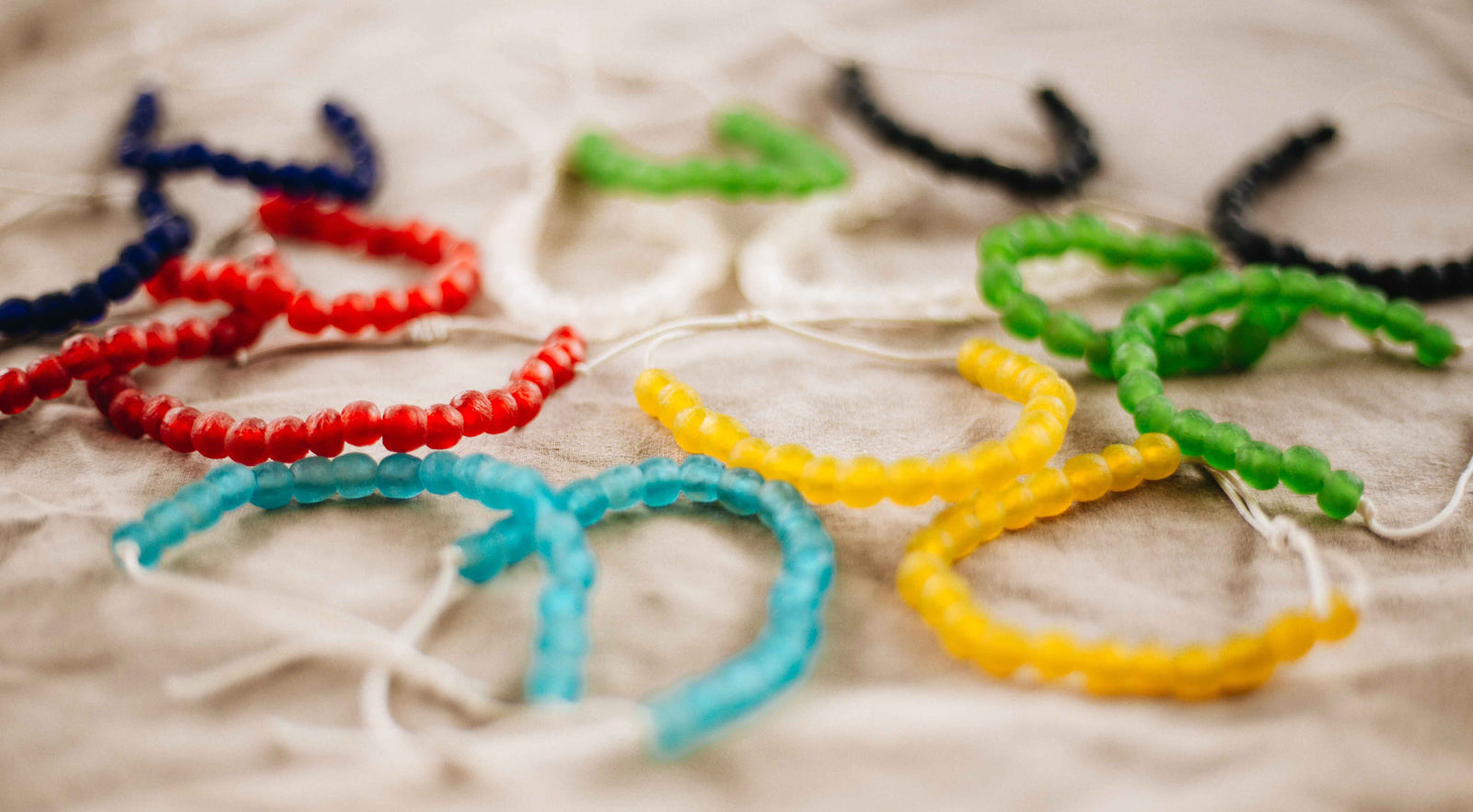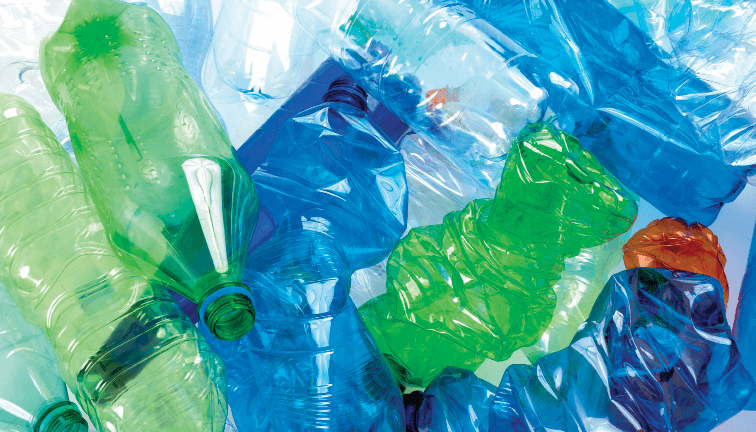Your Cart is Empty
Be the Change You Wish To See In The World!!!
What Is Sustainable and Ethical Fashion?
Most of us know that the oil and gas industry is the foremost polluting industry in the world. What many do not know, however, is that the runner up is the fashion industry. Clothing is a practical necessity for all, and it’s also an important means of creative expression. So, a growing number of people are concerned about the ethical and environmental implications of garment, shoes, and accessories manufacturing.
Those of us who are environmentally conscious know what ethical and sustainable means when it comes to recycling and preserving the planet. But how does it apply to fashion? Sometimes, ethical and sustainable fashion are presented as one thing. While they do complement each other, they mean different things with regards to clothing, shoes, jewelry, and other fashion accessories.
No matter the differences, both terms give us a new way of thinking about clothing, fashion, and self-expression and how our fashion choices impact the planet. The concepts of sustainable and ethical fashion have become refreshing fashion trends. As consumers become more aware of the damage the textile industry does to the environment, they are taking a greater interest in brands that are seeking to do their part for the social good as well as the planet. Circular economies seek to cut out the single-use, waste-creating aspects of our current economic system and instead replace them with practices that not only reduce waste but also find ways to keep products and materials in use while regenerating natural systems
Let’s take a look at what these two terms mean, how they work together, and how you can make a different kind of statement with your attire. Remember, fashion also includes jewelry, and we know a little something about recycled bracelets here at Bead the Change.
Ethical Fashion
When it comes to ethical fashion considerations, you must look at the whole production process, all the way back to the growing of the cottonseed. At every stage of production, the processes should be carried out with fair treatment for the workers along every stop on the supply chain. Every individual, whether working on the raw materials or the finished product, should be treated and paid fairly. And of course, safety in the work environment is paramount, always.
Working Toward the Social Good
In short, ethical fashion works toward the social good of society. It takes into account the workers who make the clothing industry possible. This includes everyone from the farmers who grow the fabric to the garment workers who stitch the pieces together. These efforts go beyond the surface we see as consumers. Rather, social good is deeper than the public image. A brand must take care to ensure fair wages, maintain fair trade certifications, and provide healthy working conditions. The ethically responsible brand invests in its people as much as it does its product, if not more so.
Ethical Treatment of Animals
Ethical treatment applies to animals as well as to humans. When animal products are part of the production process, humane treatment for those animals applies. While you will not find animal skins, pelts, or teeth in ethical fashion pieces, many of your woven knits come from sheep and alpaca. Thus, the raising, feeding, care, and shearing of those animals must keep the health and wellbeing of the animal in mind.
Ethical clothing is animal cruelty-free, and care is taken not to harm animals in any way during the manufacturing process. Also, many vegan clothing brands are entering the market, proudly stating that there are no animals or animal by-products in their clothing lines, not even in the threads.

Sustainable Fashion
While ethical fashion principles focus on fair treatment of humans and animals during the manufacturing process, sustainable fashion principles revolve around environmental concerns as they pertain to the clothing industry.
We are all aware of the negative effect of climate change. Still, so many people carry on as though our planet contains unlimited resources. Those consumers and brands who acknowledge sustainable fashion know that it has the potential to counteract the rise of climate change due to pollution.
Sustainable fashion practices reduce the amount of water, chemicals, and energy consumption that’s normally required to produce the product line. This, in turn, reduces the amount of waste that’s currently overflowing our landfills. In this way, sustainable fashion helps reduce our impact on the environment and animals.
Reducing the Footprint
Manufacturing of any kind leaves its mark on the planet. Sustainable fashion means producing clothing and accessories and leaving as neutral a footprint as possible on the environment. To be sustainable and environmentally responsible, a brand looks at their design process and makes every attempt to minimize waste. They analyze materials like threads, fabrics, zippers, clasps, and buttons.
Cotton and other natural fibers are often treated with pesticides that are harmful to workers, farmers, and the surrounding wildlife. Organic bamboo and cotton are alternatives because these materials require less water to grow. Further, they don’t require harmful chemicals, thus sparing the farmland from being sprayed with toxic pesticides. Sustainable fashion brands often choose organic products and ensure that their suppliers follow the principles of organic farming.
There are now more organic options for cotton, linen, and other fibers that also use less water than the conventional growing methods. Plus, brands are looking at being organic throughout the production process, not just the growing of crops, which is only the first step.
Next, they consider materials in terms of recycling and energy reduction, packaging, and recyclable or compostable swing tags.
Considering the Entire Lifecycle
Successful sustainable brands also focus on what’s called circularity in the supply chain, which includes the end-of-life processes of an accessory or garment once the consumer is done wearing it. These brands take into account the environmental as well as the socio-economic aspects of their product’s entire lifecycle.
This is not an easy task. It requires ongoing work to improve each stage of a product’s lifecycle, as early as the design and raw material production, through the manufacturing, packaging, and delivery to market. Even then, the considerations and planning extend past the final sale and on to the reuse, repair, repurposing, and recycling of the product.
In reality, there isn’t a way to create a 100% sustainable garment or pair of shoes. However, much can be done to reduce the fashion industry’s global footprint.
Slow Fashion
Slow fashion is a term that’s come to mean keeping and taking care of one’s clothes so that they last longer. If we require less, then we can produce less and minimize our footprint. The wasteful cycle, also called Fast Fashion, is the consumer’s tendency to buy and then throw away clothes far too quickly.
If clothing is made with durability in mind, it will last longer. Many brands use stronger materials and support them with a warranty. Fabric does break down eventually, however, and sustainable brands include that in their business models. Such companies offer repair or return programs. In some cases, they have recycling protocols for returned items.
Upcycled Clothing and Accessories
Many brands are finding unique ways to support this principle of reducing waste. For instance, some are employing a little creative innovation. They are reusing older fabrics to make trendy, new pieces. You may have heard about these which are called upcycled or recycled clothing. Some brands sell upcycled clothing exclusively. One of the benefits to the consumer here is that recycled fabrics often mean a more affordable price.
Upcycled clothing is like vintage clothing; the only difference being that vintage material is incorporated into a new design rather than being sold as a second-hand item. The vintage material replaces the need for new, raw material.
Recycled Material
Many common fabrics are made with recycled materials. A common one is polyester, which is made from recycled water bottles. Some brands use partially recycled materials, while others will state that the garment is made from “100% recycled polyester.”
Other brands are taking it one step farther and making sustainable clothing out of novel materials. One company designed sustainable swimwear that’s made from ocean plastic waste. As you can imagine, this one has a special place in our hearts, since our recycled bracelets are also made, in part, from recycled ocean plastic.

Sustainable and Ethical Fashion Accessories
So far, we have discussed ways that brands can be ethically responsible and produce sustainable clothing. All these principles apply to shoes and accessories as well. These include everything from purses, belts, scarves, hats, and jewelry.
For the Social Good
At Bead the Change, we keep ethics and sustainability in mind, along with the social good. We sell recycled bracelets and donate a portion of each sale to organizations that work to combat pollution and global warming. Our handmade beads are made from the same factory in Ghana, where we employ local artisans. We ensure the workers are paid a fair wage to support their families, which, in turn, supports their communities.
Recycled Materials
Ghanaian beads are made from recycled glass bottles and handcrafted into vibrant colored beads. The bracelet cord is also made from recycled plastic waste, most of which comes from ocean cleanup efforts. Furthermore, we do our part to be even more eco-friendly by using zero-waste packaging. We are proud to say that our charity bracelets are ethical and sustainable fashion accessories.
Comments will be approved before showing up.
Now, you never have to tuck your jewelry away because it needs a deep cleaning. You can keep your jewelry sparkling yourself using eco-friendly cleaning agents you probably already have around the house.
Here are a few cleaning options that don’t involve harsh chemicals.
PET and rPET reduce the amount of plastic circulating the planet, and it offers other advantages for manufacturers and consumers alike. What makes rPET readily recyclable is that it can be used again and again by washing and then re-melting it. In fact, about 1.5 billion pounds of PET containers and bottles are recovered in the U.S. annually, making it the most recycled plastic in the country. Just about all municipal recycling programs in Europe and North America accept PET plastic.



